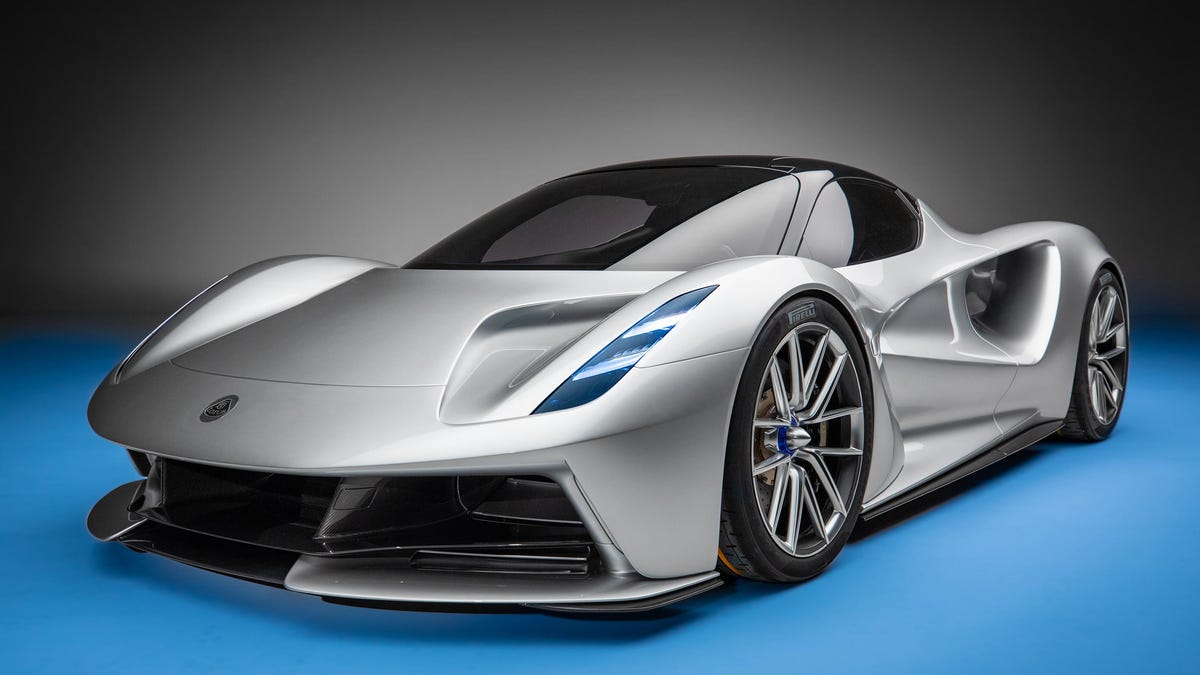Lotus Evija electric hypercar aims just shy of 2,000 horsepower
Lotus wants its new EV super-coupe to be the most powerful production car ever.
Lotus has been sailing along for the last several years with occasional rehashes of its three core vehicles -- Elise , Evora and Exige . But now, under the tutelage of new parent company Geely, Lotus is ready to roll out something that's wildly different from the norm. It's the Lotus Evija, and it's nuts.
Lotus on Tuesday unveiled its all-electric hypercar, the Evija. Pronounced "E-vi-ya," and reportedly translating to "the first in existence," this car represents a dramatic departure from the usual day-to-day Lotus stuff. It's a proper moonshot, packing all manner of new technologies while aiming for stratospheric numbers that would fit right in with all the wild metal seen at every Geneva Motor Show.
We'll start with the looks. The Evija is such a radical departure from the current Lotus design language that it's almost surprising to see the badges on it. It looks more like the Aston Martin Valkyrie than an Evora, with body panels that hug the wheels and generate a whole bunch of interesting shapes on the sides -- I mean, look at that those massive air channels just ahead of the rear wheels! I even see a little bit of the McLaren F1 in the side profile, thanks to its wedge-y shape.
The rear is perhaps the most marvelous part of the whole car. Those channels ahead of the rear wheels send air through two positively massive outlets at the rear, surrounded by LED lights. The rear diffuser is the size of a small European village, and there's another LED light smack dab in the middle of it. It appears the charging port is tucked away back there, too, just under the Lotus badge.
The interior keeps Lotus' focus on simplicity, but its design looks far more futuristic. There's a whole lot of low-gloss carbon fiber, and the center console is a thin, little thing that rises rather dramatically, leaving plenty of space behind it for storage. The steering wheel is small and square, and it rests just ahead of a single digital screen that stands in for a more traditional gauge cluster. Since it lacks traditional side mirrors, there are screens in both door panels that beam a camera's view to the cockpit.
If you think the looks are bonkers, wait until you hear about the powertrain. While Lotus isn't divulging production specs just yet, it has a number of target specifications. Its battery sends juice to all four wheels by way of electric motors that are aiming for an output just shy of 2,000 horsepower and 1,250 pound-feet of torque. With a curb weight 3,700 pounds in its lightest specification, 62 miles per hour hopes to arrive in under 3 seconds, with the speedometer reaching 186 mph in less than 9 seconds and topping out north of 200 mph.
The battery is estimated at 70 kilowatt-hours, which might not seem like much, but Lotus believes it can squeeze 250 miles of range out of that figure, although that number is likely based on European WLTP measurements, which tend to be more favorable than the EPA's handiwork. Using a 350-kilowatt charger, the battery should top off in just 18 minutes.
Of course, all this capability means one thing: It will drain money from your wallet faster than it drains electrons from its battery. Lotus estimates that each car will cost between £1.5 million and £2 million ($1.9 million to $2.5 million). The automaker is asking for a £250,000 ($310,000) refundable deposit to get one of the 130 production slots on offer. Production is scheduled to commence in Norfolk, England in 2020.


